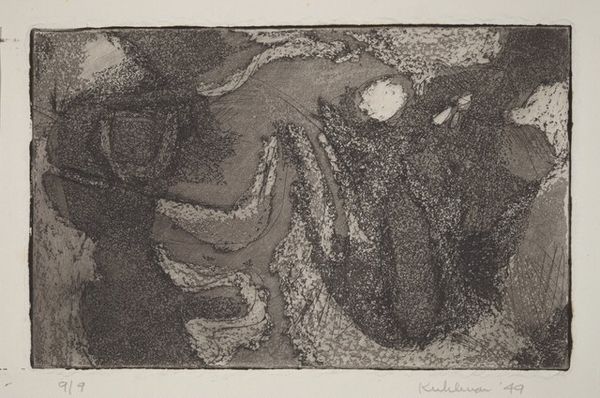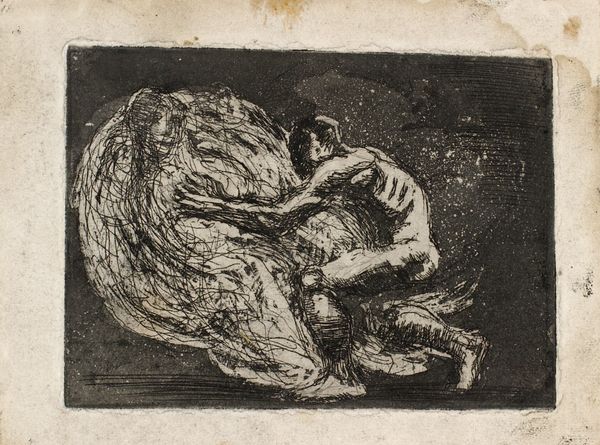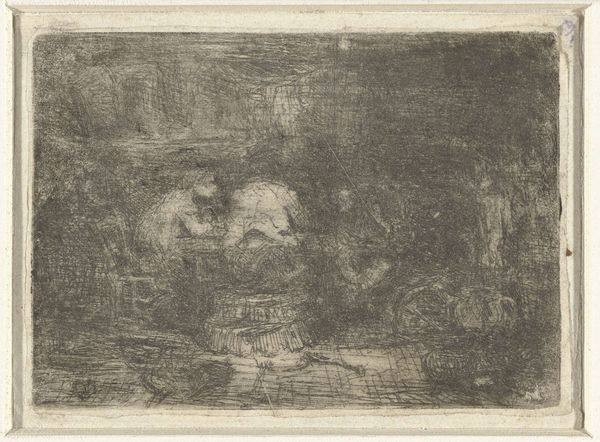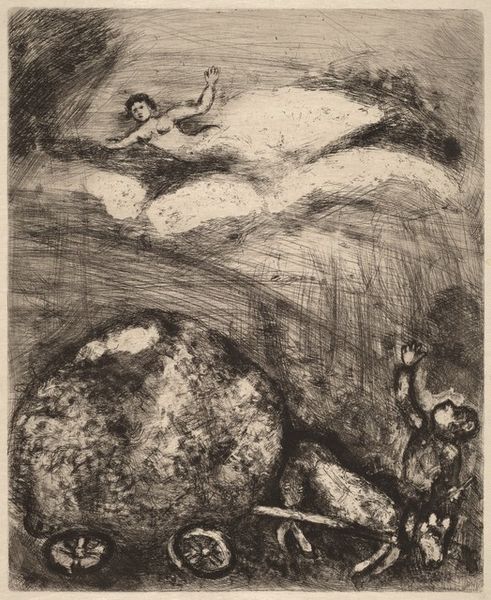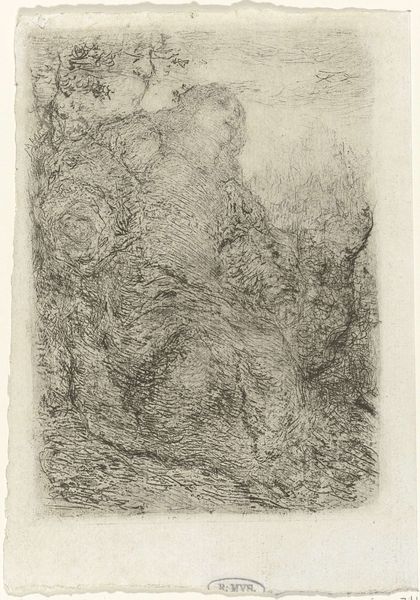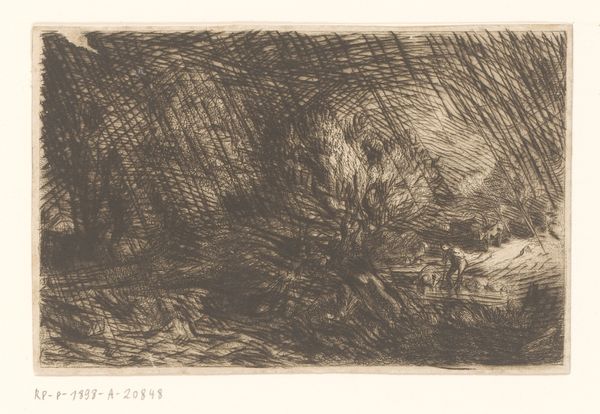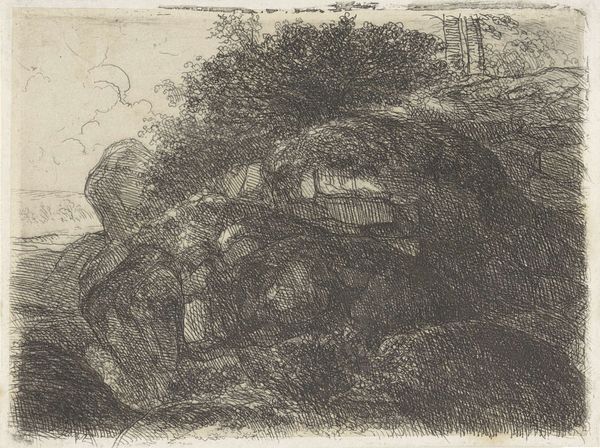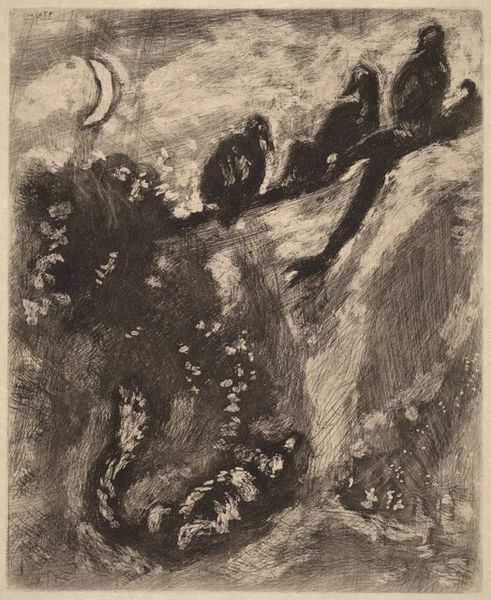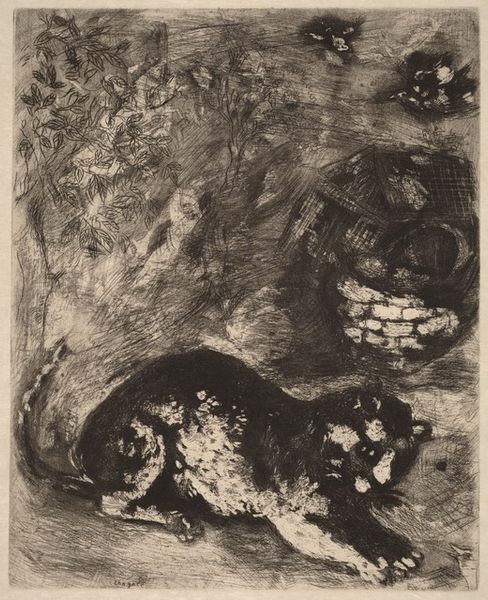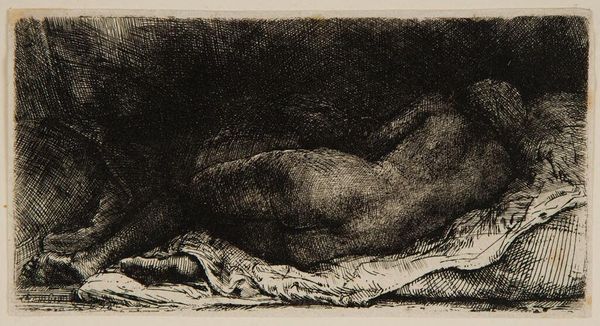
Copyright: Public Domain: Artvee
Curator: Odilon Redon created this etching, Cavalier Galopant, in 1866. It's interesting how Redon, more known for Symbolism, already shows some proto-symbolist traits here. What is your impression of this early piece? Editor: The first thing I notice is the dense texture created by the etching—a network of lines working together, but separately made—it gives it a gritty, almost tactile feel despite the relatively smooth appearance in the photo. It looks like something unearthed rather than something imagined. Curator: Indeed! It's quite earthy. Notice how the cavalier, almost swallowed by the darkness on the left, seems to be riding into the light. Think about the symbolic weight given to the landscape, not just as a backdrop, but as an arena of the psyche. The stark contrast suggests a journey through turmoil, the clouds like psychic disturbances. Editor: Speaking of landscape as something felt, what's so interesting here is how much mark-making went into the natural scenery, what the ground is made up of. How would this have looked if Redon had employed a smoother technique? Would the narrative have shifted into one of observation rather than something imagined, an internal quest as you said? Curator: Exactly. The technique is pivotal, shaping our reception. The dense cross-hatching really pulls one into this feeling of something obscure being pulled into light... it echoes archetypal patterns: think of heroes' journeys, facing inner shadows. What stands out, materially speaking, about how this particular kind of etching, contributed to the narrative? Editor: Given that this piece is from 1866, there's an interesting industrial dimension. Etching made multiple reproductions easy to create, at the very beginning of our own world of images. That said, the intense labor that it took to make just one must be appreciated. Redon’s world becomes infinitely more shareable. How does this impact notions of "genius" tied to Redon at this time, I wonder? Curator: That is certainly a crucial point about art reproducibility changing our notions of reception. Perhaps it made a landscape that reflects an inner world much more relatable—less tied to unique artistic genius and more linked to the common experience. Redon anticipates a turn toward a broader audience wrestling with the symbolism of our dreams. Editor: Indeed, the accessibility created through production means opens the door for many to ponder the relationship between mind and terrain, light and shadow. This makes me think differently about Redon's world and the potential he saw for his works. Thank you, it's been enriching to talk through. Curator: And for me too!
Comments
No comments
Be the first to comment and join the conversation on the ultimate creative platform.

